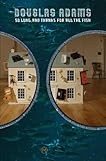If you’re planning a visit to Poland, set aside a weekend to explore Gdansk. Though the center of this historic port city was almost destroyed during World War II, it retains its striking blend of Renaissance and medieval-era architectural styles. From museums to galleries, cafes to nightlife, Gdansk offers an entertaining backdrop in which to spend a weekend.
 St. Mary’s Church
St. Mary’s ChurchHead to the center of town for a tour of St. Mary’s Church. The world’s largest brick church, St. Mary’s has a 255-foot-tall tower, encompasses a massive 16,400 square feet and accommodates up to 25,000 worshippers. Construction began in 1343, but this huge building wasn’t completed until 1502. A center for Catholic worship until the Reformation, St. Mary’s was used by Protestant congregations until 1945, when it was partially destroyed in World War II. Fortunately, most of the church’s art and artifacts were preserved. Today, St. Mary’s contains 30 chapels, 300 tombs, a Baroque-era organ and 37 huge windows – the largest is 416 square feet.
 Amber Museum
Amber MuseumThough a museum devoted to 40-million-year-old fossilized resin may not sound too interesting, Gdansk’s Amber Museum is a must see. Most of the world’s amber comes from the Baltic region, and Gdansk has long been a center of trade in this odd, honey-coloured substance. The museum encompasses six floors of a historic tower and contains thousands of artifacts, from jewellery to amber embedded with prehistoric creatures. Each floor of the museum is devoted to a different aspect of amber, from its creation to its harvest and use.
The museum’s setting is an attraction in its own right; originally constructed as a gateway to the city, the tower was turned into a prison and center for torture. While you’re walking around the museum, look for carvings on the walls and doors where the prisoners left their marks.
 Old Town Hall
Old Town HallGdansk’s Old Town Hall was built in the late 1500s. This former seat of government power is a well-preserved example of Renaissance-era, brick and stone architecture, complete with a tall tower and carvings of Polish, Prussian and Gdansk shields. Today, this Flemish-styled building houses the art and exhibits of the Baltic Sea Culture Centre. The centre hosts a regular schedule of concerts and presentations and contains a café and gift shop.
 National Museum
National MuseumHoused in a historical Franciscan monastery that’s an attraction of and in itself, the National Museum contains art, artifacts and crafts from Poland and the world, from paintings to porcelain, wood carvings to wrought iron, and furniture to fabrics. The museum also contains an impressive collection of Flemish and Dutch paintings from the 1400s, including works by Van Dyck, Brueghel and Memling.
 Roads to Freedom Exhibition
Roads to Freedom ExhibitionLearn about Poland’s struggle toward democracy at the Roads to Freedom Exhibition. Established in 1999, this multimedia, interactive exhibit documents a challenging period in Polish history -- 1945 to the present -- including the revolution of 1956, the period of martial law, the fall of communism and the transition to democracy.
This article was brought to you by the Luton Airport Parking team. As a destination of this airport, you may find yourself flying from there one day. If you do, and you're looking for parking at Luton Airport, be sure to try their website.

























































No comments:
Post a Comment
Please leave us some love...and have yourself a groovy day~!! Peaces...xoxo